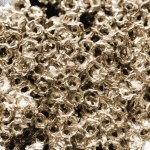Rally racing is a thrilling, adrenaline-filled motorsport that pushes both driver and vehicle to their limits. As you traverse unpredictable terrains, from slick ice to rocky dirt roads, it’s essential your car is equipped with the best possible setup. One key aspect of your vehicle’s performance is the suspension system. Let’s delve into the factors that contribute to a well-tuned, custom rally car suspension system.
Choosing the Right Parts for a Custom Suspension Build
Before diving into the process of customizing your car’s suspension, it’s important to have a clear understanding of the necessary components. A suspension system is a complex web of parts that work together to keep your vehicle stable and your tires on the road.
A voir aussi : Can Upgrading Your Car’s Throttle Body Improve Airflow and Engine Performance?
The first consideration is the shock absorbers. These are vital for controlling the vehicle’s movement, especially during high-speed maneuvers. For rally racing, you’ll need shocks designed to handle the significant weight transfer that occurs when navigating fast, uneven terrain. Bilstein and Ohlins are renowned manufacturers of high-performance shocks suitable for rally racing.
Next, consider the springs. The spring rate will affect the car’s ride height and how it responds to bumps. Generally, a higher spring rate (stiffer springs) will improve cornering performance but may make the ride harsher. On the flip side, a lower spring rate (softer springs) will provide a smoother ride but may result in more body roll.
A lire également : Can the Use of a Carbon Fiber Driveshaft Offer Benefits in Terms of Weight Reduction and Strength?
Lastly, think about the sway bars, also known as anti-roll bars. These bars connect the left and right side of your car’s suspension and help to minimize body roll during cornering.
Balancing Front and Rear Suspension
An often overlooked aspect of suspension tuning is the balance between the front and rear. This balance can significantly affect the handling characteristics of your car, particularly in a rally racing environment.
Typically, a car with a stiffer front suspension and softer rear will have a tendency to oversteer. That means the rear of the car will want to swing out in corners, which can be beneficial for quickly navigating tight bends in a rally race. Conversely, a car with a stiffer rear suspension and softer front will tend to understeer, meaning the car will want to continue straight even when steering into a turn.
It’s crucial to strike the right balance based on your driving style and the specific requirements of the rally course.
Selecting the Right Tires for Rally Racing
The tires you choose for rally racing will play a significant part in how your suspension performs. Your tires are the only contact point between your vehicle and the road, and they need to work in harmony with your suspension to deliver optimum performance.
For dry and dusty gravel roads, a narrow tire with a rugged tread pattern will provide good grip and allow for precise car control. When racing on wet or muddy terrain, a wider tire with deep tread patterns will offer the best traction.
Tire pressure is another essential factor to consider. Lower pressure increases the tire’s contact area with the road, improving traction but potentially compromising steering response and stability. On the other hand, higher tire pressure reduces the contact area, which may improve stability but decrease grip.
Understanding the Impact of Weight on Suspension Performance
The weight of your vehicle has a significant influence on how your suspension will behave during a race. A lighter car will typically be more agile and responsive, but it may also be more susceptible to bouncing and instability over rough terrains.
Reducing weight can be achieved through a variety of methods, including using lightweight body parts, removing unnecessary components, or even opting for lightweight racing seats. However, it’s important to bear in mind that extreme weight reduction may lead to a decrease in structural rigidity, which could negatively impact the car’s handling.
In addition to the overall weight, the weight distribution of your car is also crucial. Aim for a near-equal distribution between the front and rear axles for balanced handling. Too much weight at the front can cause understeer, while too much at the rear can induce oversteer.
Using Brakes to Your Advantage in Rally Racing
Brakes may not seem like an integral part of your suspension setup, but they play a crucial role in rally racing. Properly adjusted brakes can help manage weight transfer, improve handling, and increase overall performance.
Consider a brake balance bar, a device that adjusts the balance of braking force between the front and rear brakes. By adjusting this balance, you can influence the car’s tendency to oversteer or understeer.
The type of brake pads you select also matters. Racing brake pads are designed to perform under high heat and stress conditions, providing consistent performance and longer lifespan.
In the end, customizing your car’s suspension for rally racing involves a delicate balance of many factors. Consideration of all these elements will ensure that your vehicle is well-equipped to navigate the challenging terrains of rally racing.
Adjusting Suspension Geometry and Camber Angle
As you work on customizing your car’s suspension, it’s crucial to consider the geometry of your suspension setup. Suspension geometry refers to the positioning and alignment of the suspension components. The way these components are aligned dictates how your vehicle will respond to different driving conditions.
The camber angle, an important part of your car’s suspension geometry, is the tilt of the car’s wheels from vertical when viewed from the front or rear. Having the correct camber angle is crucial to ensure that the car’s wheels make optimal contact with the road, allowing for better grip and handling. For rally racing, a negative camber angle (where the top of the tires lean in towards the vehicle) is often preferred, as this setup increases the car’s cornering ability.
When altering your suspension geometry, it’s also important to consider your car’s ride height. This is the distance between your vehicle’s chassis and the ground. While a lower ride height can provide better handling and aerodynamics, a higher ride height may be more suitable for rally racing. This is because a vehicle with higher ride height can better handle the varying terrains and obstacles often encountered in rally racing.
In short, understanding and adjusting your suspension geometry and camber angle are key steps in equipping your rally car for optimum performance.
Incorporating a Link Suspension System
To further enhance your car’s handling and stability, you may want to consider incorporating a link suspension system. A link suspension system consists of several rods (links) that connect the suspension to the chassis. This type of suspension allows for a greater range of motion (inches of travel) while keeping your vehicle’s tires on the ground, enormously beneficial for rally racing.
There are different types of link suspension systems, including the 4-link, 3-link, and 2-link systems, each offering specific benefits and drawbacks. When selecting the right system, consider factors such as the terrain you’ll be racing on, your budget, and the complexity of installation.
For example, a 4-link suspension system provides excellent stability and is often used in high-powered, competitive rally cars. However, this setup can be more complex and costly. On the other hand, a 3-link system is more straightforward, cheaper, and might be a good choice if you’re new to the world of rally racing.
Conclusion
Customizing your car’s suspension for rally racing requires careful consideration of numerous factors. From selecting high-performance shocks and springs to adjusting your suspension geometry and camber angle, each decision plays a vital role in how your vehicle will perform on the rally course.
Furthermore, incorporating a link suspension system can greatly enhance your car’s handling and stability, helping you navigate unpredictable terrains with greater confidence and control. Additionally, proper weight management and brake adjustment can further optimize performance.
Ultimately, the best approach to customize your rally car’s suspension will depend on your specific needs, preferences, and the unique demands of the rally racing environment. Always keep in mind that trial and error is part of the process. As you gain more experience and knowledge, you’ll be better equipped to make the right decisions for your suspension setup.
Remember, the goal isn’t just to make your vehicle street legal or simply able to complete the course. The aim is to optimize the performance of your rally car, pushing both you as a driver and your vehicle to their limits. Keep the thrill of the race and the love for the sport at the forefront as you continue to customize your car’s suspension and make your mark in the world of rally racing.











